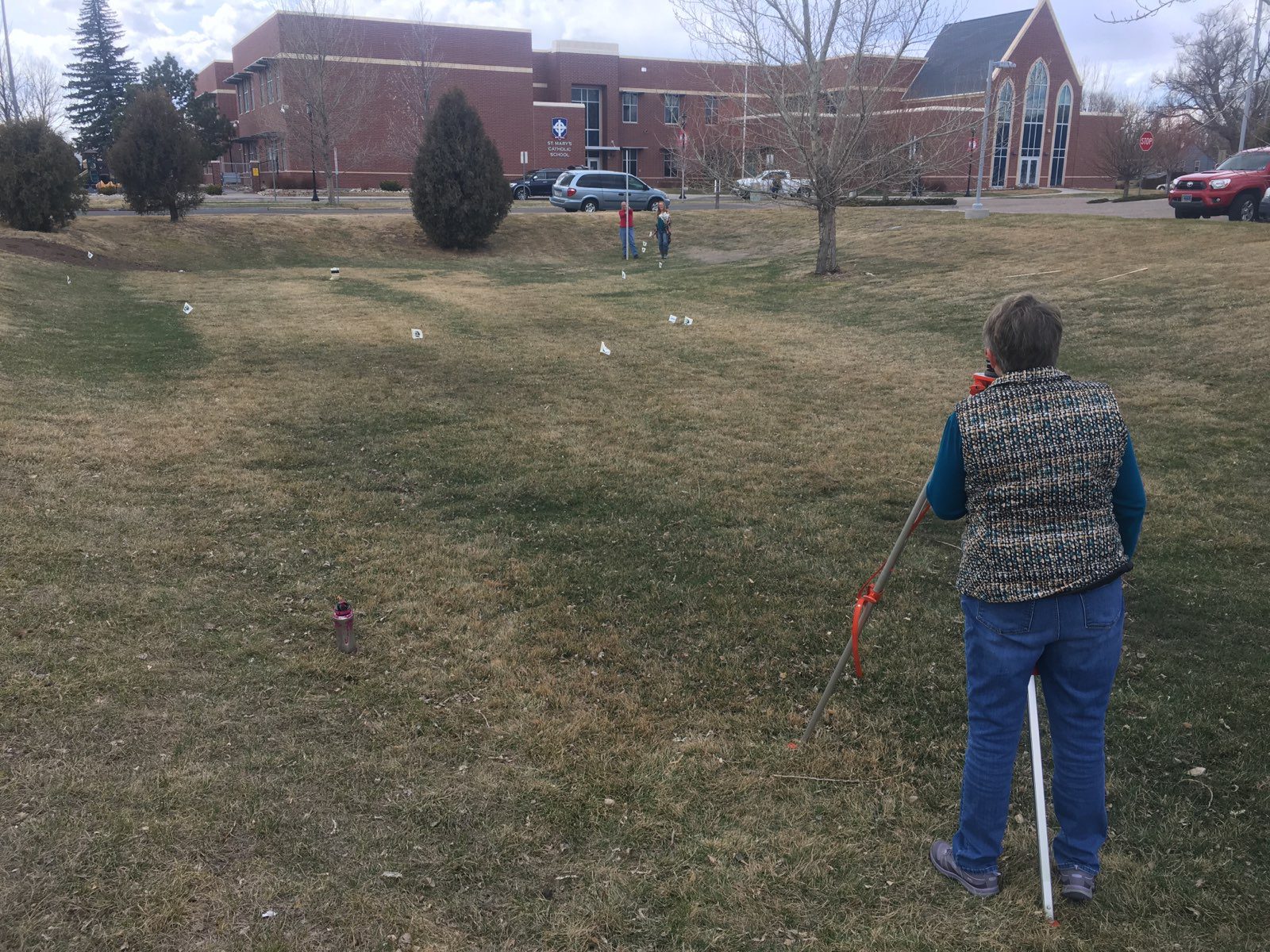 The initial meeting on diversifying the plantings in the library’s detention pond established the broad strokes for the project. The next step was to find monetary support. After several unsuccessful attempts to find a funding source, Catherine Wissner, the Laramie County Horticulturist through the University of Wyoming’s Extension Office, directed the project coordinators to the “Specialty Crop Block Grant Program”.
The initial meeting on diversifying the plantings in the library’s detention pond established the broad strokes for the project. The next step was to find monetary support. After several unsuccessful attempts to find a funding source, Catherine Wissner, the Laramie County Horticulturist through the University of Wyoming’s Extension Office, directed the project coordinators to the “Specialty Crop Block Grant Program”.
The Specialty Crop Grant is funded through the United States Department of Agriculture and is administered by the Wyoming Department of Agriculture. Jeff Geyer, Laramie County Conservation District’s (LCCD) Water Specialist, wrote the grant application. The grant application focused on three major outcomes:
- Increasing pollinator habitat
- Providing a specialty crop in the form of seeds to the library’s Seed Library
- Creating educational opportunities to learn about pollinators and their habitat
In the early part of 2019 the Laramie County Library Water-wise and Pollinator Bio-retention System (Project) received a Specialty Crop Block Grant in the amount of $24,500 to be administered through the LCCD.
Once project funding was obtained, a design and plant selection committee was formed. Fortunately, the funding process not only brought a monetary source to the project, it also brought a new Community Partner, the Laramie County Master Gardener’s organization. The core Design Committee for the library’s detention pond project consisted of four Master Gardeners, the LCCD Water Specialist, and the Project Leader for the Community Wildlife Habitat Project, West Edge District.
The project site is 11,000+ sq. ft. and is shaped like an oval with a flat bottomed bowl and gently sloping sides. The Design Committee’s first step was to analyze the site’s environmental conditions by asking questions such as:
- How does stormwater runoff flow into the basin and how does it move as it spreads out along the bottom?
- How high is the groundwater table?
- How steep are the sloped sides?
- What are the directional aspects of each sloped slide with respect to the seasonal sun and other factors?
The next step in the design process was to consider the wildlife habitat needs for the site, which will be covered in the next blog post in this series. Stay tuned!
~Nancy Loomis, Project Leader: Community Wildlife Habitat Project, West Edge District
